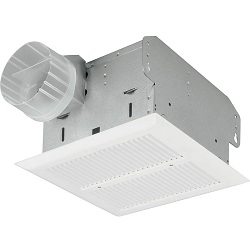Window Condensation in today’s tightly built, energy-efficient homes.
This is an important topic because window and door condensation can occur in your new tight built, energy efficient home. It can also be minimized with the correct heating and cooling plan for your new home.
First, what is condensation and why does it happen? Condensation is the change of state from a vapor or gas to a liquid. This results in the visible evidence of excessive moisture in the air. The warmer the air, the more moisture it can hold. As the warm air comes in contact with a cold surface it condenses on the surface and water droplets form. The coldest surfaces in your house are typically your windows and doors since they have the lowest R-values.
Condensation occurs most frequently in the late fall and early winter when you have the largest changes in temperature during a 24-hour period and the humidity level inside the house does not adjust. This, coupled with the added indoor heat from your furnace, creates an even greater temperature difference, which is a perfect environment for condensation to develop. In older houses, condensation is typically not a problem because there is enough air infiltration to remove excess moisture. A lot of older homes have single hung windows that are not air sealed. There may not be a vapor barrier installed under the siding or wood lap. Electrical outlets are probably not sprayed with foam sealant to prevent infiltration. This allows heat to escape making older homes more costly to heat but it also lets moisture escape, lowering the likelihood of condensation. In new houses, the moisture is trapped inside the occupied space.
In order to avoid condensation in the winter months when the temperature drops below 35 degrees, you should maintain the relative humidity in your home at 25 to 30 percent. Your lifestyle choices can also help contribute to the relative humidity in a house and the likelihood of condensation forming. For instance, if you like to take long hot showers, enjoy canning, or choose to run a humidifier; you are increasing the moisture in your house and thus increasing the likelihood of condensation occurring. On the other hand, if you like sleeping with the windows cracked, run the exhaust fans in the bathrooms when showering, or have a fireplace you use regularly, you are decreasing the humidity in your house.
So why is it important to limit condensation? The water on your window sills can damage the finish. If left long enough without being wiped off, mold could grow. It can also lead to poor air quality.
In our experience when a condensation issue arises, it is almost always in a house without a forced air heating system. A customer who chooses radiant heat or hot water baseboard heat without any form of air conditioning may have a condensation problem. However, many of these new homeowners do not report any condensation problems because their lifestyle choices eliminate condensation from occurring.
There are several things you can do to help reduce moisture levels:
1) Lifestyle changes such as:
- cracking a window
- turning on bathroom vents when you shower and letting them run for 10-15 minutes after you shower
- Running a dehumidifier to maintain a consistent indoor relative humidity level.
2) For houses with radiant floor or hot water baseboard, a limited mechanical option could include installing a ventilation fan in a corridor that can be run on a programmable switch.
3) The most reliable option is to install a forced air system. This keeps the air circulating throughout your home and eliminates condensation.
If you would like more information please contact us we can discuss heating options for your new home. We can discuss the pros and cons to each type of system, taking into account your preferences and lifestyle, and also help you with pricing.
If you would like a more in-depth explanation of this subject, please see the following document: https://www.huduser.org/portal/publications/moisture.pdf
